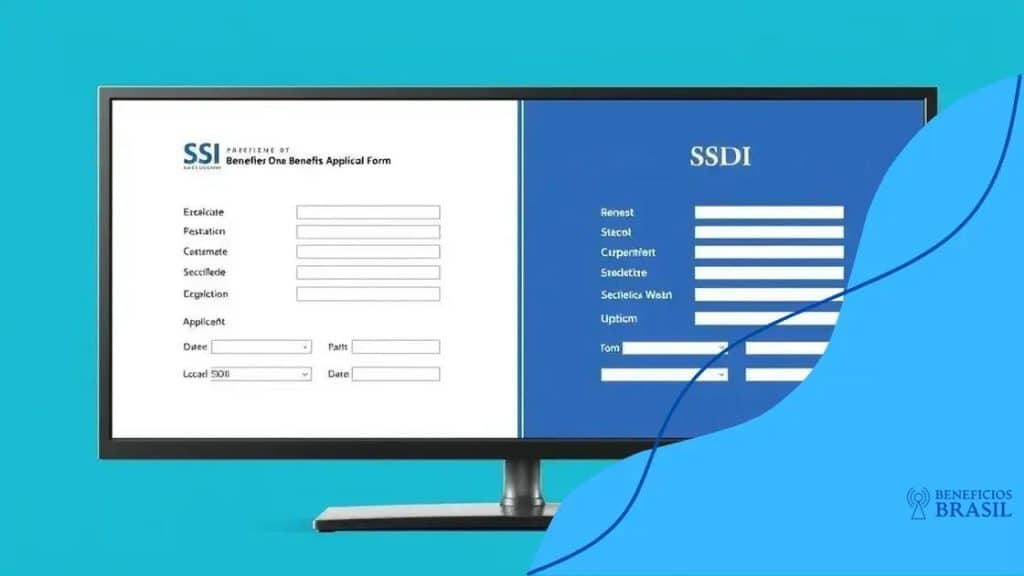SSI vs SSDI: Understanding the Key Differences

SSI provides financial assistance for individuals with limited income and resources, while SSDI offers benefits to those who have worked and contributed to Social Security.
SSI vs SSDI: these two programs can seem similar at first glance, but they serve different purposes. Are you unsure which one might apply to your situation? This article breaks down their differences and helps you find the right option for your needs.
What is SSI and who qualifies?
Understanding SSI is essential for those who need financial assistance. Supplemental Security Income (SSI) provides money for basic needs like food and shelter.
To qualify for SSI, one must meet specific criteria. Age, disability, and limited income play significant roles. For example, individuals aged 65 or older may qualify, along with those who are blind or disabled.
Financial Criteria for SSI
Income limits are crucial for SSI eligibility. The Social Security Administration (SSA) sets guidelines regarding how much money you can earn or have in assets. If your income is below this threshold, you might be eligible for assistance.
- Individuals must have less than $2,000 in countable resources.
- Couples are limited to $3,000 in total resources.
- Countable resources include savings accounts and property.
Another important aspect is residency. Only U.S. citizens or certain qualified non-citizens can receive SSI benefits. Living in the U.S. for at least five years often helps establish eligibility.
How to Apply for SSI
The application process can seem challenging, yet it’s essential for access to these benefits. You can apply online, by phone, or in person at a local SSA office. Gather necessary documents, like proof of income and citizenship, before you start.
Don’t forget that applying for SSI requires providing details about your living situation and financial status. This information helps the SSA determine your eligibility.
Understanding SSDI and its eligibility requirements

Understanding SSDI is crucial for those with disabilities seeking financial support. Social Security Disability Insurance (SSDI) helps those who have worked and paid Social Security taxes for a significant period.
To qualify for SSDI, you must meet specific eligibility requirements. These include having a medical condition that prevents you from working, as well as having enough work credits based on your past employment.
Work Credits for SSDI
Work credits are earned based on your annual income. Generally, you need 40 work credits, 20 of which must be earned in the last 10 years. However, if you’re younger, you may qualify with fewer credits.
- Workers can earn up to four credits per year.
- A work credit is based on your earnings, which change yearly.
- Some younger individuals may only need 6 to 12 credits to qualify.
Another key factor is your disability. The SSA defines disability as an inability to engage in any substantial gainful activity due to a medical condition expected to last at least 12 months or result in death. This condition must prevent you from performing tasks related to your previous job.
Applying for SSDI Benefits
The application process for SSDI can seem daunting. You can apply online or at your local SSA office. It’s essential to provide thorough documentation, including medical records that detail your condition.
Remember, the SSA evaluates disability claims carefully. Having detailed evidence of your medical condition can significantly improve your chances of approval.
Key differences between SSI and SSDI
When exploring SSI and SSDI, it’s important to understand their key differences. Both programs provide financial support, but they serve different groups of people.
SSI, or Supplemental Security Income, is a needs-based program primarily for disabled individuals or those over 65 with limited income and resources. Conversely, SSDI, or Social Security Disability Insurance, is intended for workers who have paid into the Social Security system.
Eligibility Criteria
Eligibility for SSI focuses on financial need and age or disability status. To be eligible, individuals must have limited income and resources, typically less than $2,000. On the other hand, SSDI eligibility requires sufficient work credits based on past employment. This generally means having worked for 5 out of the last 10 years.
- SSI is for low-income individuals.
- SSDI is based on work history and contributions.
- SSI does not require any work credits.
Next, the benefit amounts differ significantly. SSI benefits are capped at a certain limit, often lower than SSDI benefits. For many, SSDI payments can be higher since they are based on what the worker had earned over their lifetime.
Impact on Other Benefits
Receiving SSI can also affect eligibility for other assistance programs, like Medicaid. In many states, if you qualify for SSI, you automatically qualify for Medicaid. However, SSDI recipients may qualify for Medicare after being on disability for two years.
Moreover, while SSI provides immediate assistance, SSDI may take longer to process due to the requirement of providing work history and medical evidence.
How to apply for SSI and SSDI benefits

Applying for SSI or SSDI benefits can feel overwhelming, but understanding the process can make it easier. Both programs have specific application procedures that you need to follow carefully.
To start, you can apply for SSI or SSDI online through the Social Security Administration (SSA) website. This is a convenient option because you can complete the application at your own pace. When applying online, it’s essential to have the necessary information ready, including your Social Security number, work history, and medical information.
Gathering Necessary Documents
Before you begin the application, gather important documents that the SSA will require:
- Your birth certificate or another proof of age
- Medical records related to your disability
- Proof of income, such as pay stubs or bank statements
This information helps demonstrate your eligibility for benefits. If you can’t apply online, you can also call the SSA or visit a local office to request assistance.
What to Expect During the Application Process
The application for SSI and SSDI can take time to process. You may receive a decision within a few months, but sometimes it can take longer. During this period, the SSA reviews your application and verifies your medical and financial information.
If your application is denied, don’t lose hope. Many claims are initially denied, but you can appeal the decision. The appeals process involves a few steps, including requesting a reconsideration and possibly attending a hearing.
Being patient and thorough while applying is essential. Ensure that all your information is accurate and complete to increase your chances of approval.
Choosing the right program for your needs
Choosing the right program between SSI and SSDI can significantly impact your financial stability. Each program is designed for different individuals, and understanding these differences is key to making the best decision.
If you have limited income and resources, SSI may be the right choice for you. This program does not require prior work history. It’s ideal for elderly individuals or those with disabilities who have not worked enough to qualify for SSDI.
Factors to Consider
When deciding between these programs, consider several important factors:
- Your current income and financial resources.
- Your work history and the number of work credits you have earned.
- Your disability status and how it affects your ability to work.
If you have worked and contributed to Social Security, SSDI may be suitable. This program pays benefits based on your past earnings. Also, SSDI may provide higher monthly payments than SSI, which can be a crucial factor if you need more financial support.
Consulting a Professional
It can be beneficial to consult with a social worker or an attorney who specializes in disability benefits. These professionals can help assess your situation and advise on the best path forward for your unique circumstances.
Taking the time to understand your options ensures you select the program that best meets your needs. Whether you choose SSI or SSDI, the right choice can lead to the support you need during challenging times.
FAQ – Frequently Asked Questions about SSI and SSDI
What is the main difference between SSI and SSDI?
SSI is a needs-based program for individuals with limited income, while SSDI is for those who have worked and paid into Social Security.
How do I qualify for SSI?
To qualify for SSI, you must have limited income and resources, and you may need to be over 65 or disabled.
What documents are required to apply for SSDI?
You need to provide proof of your work history, medical records related to your disability, and personal identification documents.
Can I appeal if my application for benefits is denied?
Yes, if your application for SSI or SSDI is denied, you can appeal the decision and provide more information to support your claim.
